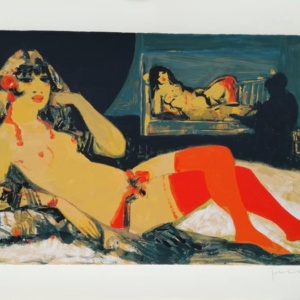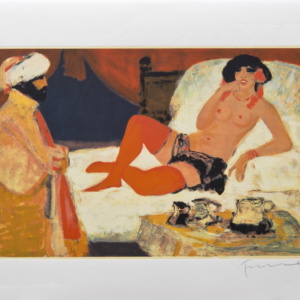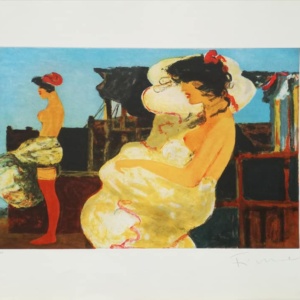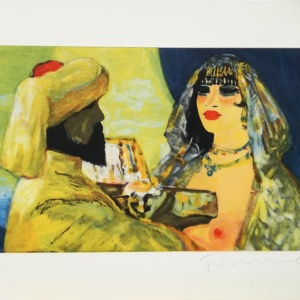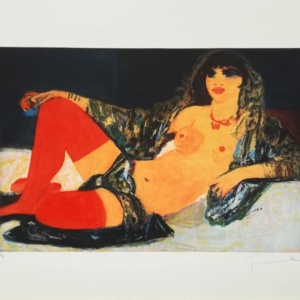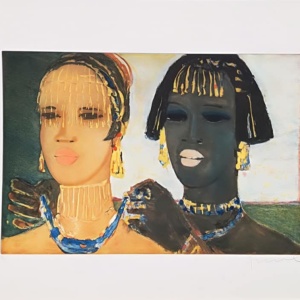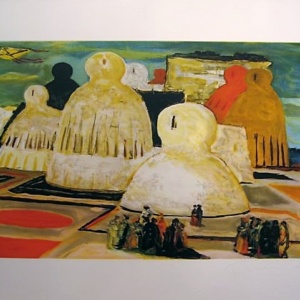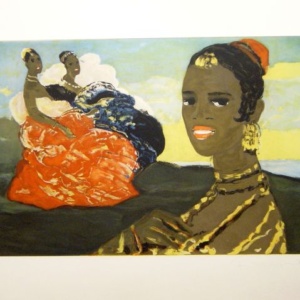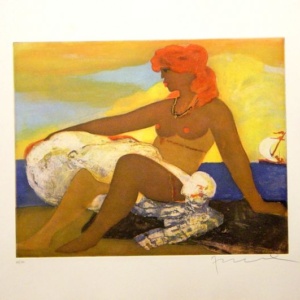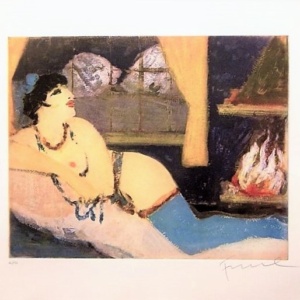Salvatore Fiume
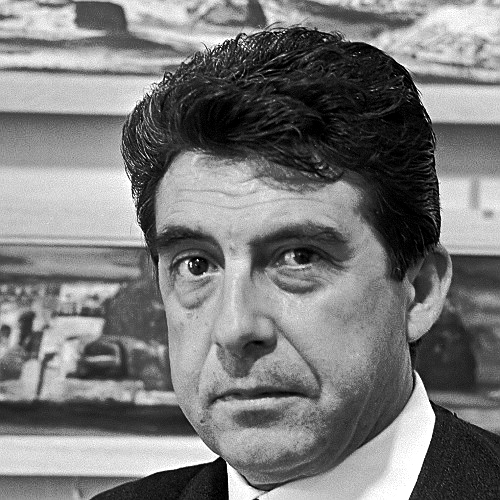
ART PRINTS
ARTISTS
Salvatore Fiume was born in Comiso in 1915. At the age of sixteen he won a scholarship to the Royal Institute for Book Illustration of Urbino, where he acquired a deep knowledge of printmaking techniques: lithography, screen printing, etching and woodcut. After completing his studies, he moved to Milan in 1936, where he met artists and intellectuals, including Dino Buzzati and Salvatore Quasimodo. In 1938 he moved to Ivrea and was employed at the Olivetti factory, where he worked as art director for a cultural magazine which was particularly dear to Adriano Olivetti, the company’s president. He first achieved success in 1943 with a literary work, the autobiographical novel Viva Gioconda!
In order to devote himself entirely to painting, he left Olivetti in 1946 and settled in Canzo, near Como, where he turned a nineteenth-century mill into a studio. It became his permanent residence in 1952 and still hosts the Salvatore Fiume Foundation. Strongly influenced by fifteenth-century Italian painting and by the metaphysical art of Giorgio De Chirico, Giorgio Savinio and Carlo Carrà, Fiume’s own work struggled to gain attention. In 1948, however, he painted and successfully exhibited a series of canvases inspired by Spanish tradition and folklore, signing them as Francisco Queyo. A supposed gypsy painter and victim of political persecution exiled to Paris, this character was Fiume’s own creation. In 1949 he held his first official exhibition in Milan, where his Isole di statue (Islands of Statues) and Città di statue (Cities of Statues) aroused much interest among critics. Alfred H. Barr Jr., the Director of Collections at New York’s MoMA, acquired the 1947 Città di statue (Cities of Statues) for the prestigious American museum. Thanks to the influence of Savinio, he took part in the Venice Biennale of 1950, where he exhibited the triptych Isole di statue (Islands of Statues), now in the Vatican Museums collection. In the 1950s he also started to work as a stage designer, an activity that he successfully carried out throughout his life, creating sets for the most important Italian and European opera houses. In 1951 the distinguished architect Giò Ponti commissioned a huge painting – 48 metres long and 3 metres high – for the first-class grand salon of the ocean liner Andrea Doria. He painted an imaginary Italian Renaissance city full of art masterpieces from various historical eras, but the work was unfortunately lost when the ship sank off Nantucket Island, Massachusetts, in 1956. In 1953, Life and Time magazine commissioned a series of works for their New York headquarters. Fiume painted an imaginary history of Manhattan and New York Bay, which he reinvented as Isole di statue (Islands of Statues). Between 1949 and 1952, commissioned by industrialist Bruno Buitoni Sr, he created a series of ten large canvases whose themes and title were Avventure, sventure e glorie dell’antica Umbria (Adventures, Misfortunes and Glories of Ancient Umbria), now housed at the River Room at Palazzo Donini in Perugia. On the occasion of his great 1974 retrospective at the Royal Palace of Milan, he created a life-size polystyrene reproduction of some of the rocks he had painted in the Babille valley during a trip to Ethiopia in 1973, which occupied almost the whole of the huge Caryatid Hall. On the same occasion, he exhibited Gioconda africana (African Mona Lisa) for the first time, now found in the Vatican Museums. In the 1970s he began sculpting, and some of these works were installed in important public buildings, such as the European Parliament in Strasbourg, the offices of the San Raffaele hospitals in Milan and Rome, and the Museo del Parco in Portofino. The group Fontana del vino (Wine Fountain) is located in the city of Marsala.
Other major exhibitions were held at the National Museum of Castel Sant’Angelo in Rome (1985) and at Villa Medici, home of the French Academy in Rome (1992). His works are found in some of the most important museums worldwide, including the Vatican Museums, the Hermitage Museum in Saint Petersburg, MoMA in New York, the Pushkin Museum in Moscow, and the Gallery of Modern Art in Milan. Fiume died in Milan in 1997.



